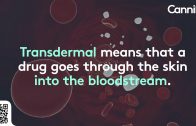Cannabis and Big Pharma
Dr. Ethan Russo on 3 echelons of cannabis commerce: pharmaceutical development, standardized cannabis supplements and artisanal production. Peaceful co-existence while still achieving practical goals for he farmer and marketplace.
The four pillars of a true medicine are:
1) Efficacy
2) Safety
3) Standardization
4) Accessibility
A Pharmaceutical Cannabis-based Medicine Must
– Be standardized, consistent and display a quality equal to any New Chemical Entity
– Possess a practical and suitable delivery system that minimizes patient risk, including intoxication, other aspects of drug abuse liability or serious adverse events (e.g., pulmonary sequelae)
– Have a supply chain that ensures security that it is being distributed to its intended target patients
– Be accessible, meaning available and affordable.
Advantages of Pharmaceutical Prescription Cannabinoids
– Safe and effective evidence-based pharmaceutical formulations
– Preparations that physicians may prescribe with confidence, that pharmacists endorse and supply
– Prescriptions that government health services and third party payers will cover
What Patients Really Want
– Relief of pain or other symptoms without the necessity of an altered state of consciousness
– A medicine that is consistent in quality and effects
– A medicine that is legally obtainable, accessible, and that their doctor recommends
Can a Botanical Product Even Become a Pharmaceutical?
– One topical agent, sinecatechins, an extract of green tea, Camellia sinensis, is FDA-approved for venereal warts
– One single component botanical isolate taken internally, crofelemer, from Croton lechleri, is approved for diarrhea due to HIV
– Epidiolex®, a 98% pure CBD preparation from an extract is FDA-approved in Dravet and Lennox-Gastaut syndromes.
Food and Drug Administration. Guidance for industry: Botanical drug products. US Government. 2015.
Quality
– Product Composition
– Characterization
– Quantification of components – Standardization / Consistency – Stability / Storage
• Safety
– Animal data, including:
• Carcinogenicity
• Reproductive toxicology • Chronic toxicology
• Genotoxicology
• Safety pharmacology
– Clinical data
• Several hundred patient-years of data required • Reports of all adverse events (mild/moderate/
severe – related and unrelated)
• Immediate regulatory notification of SAEs
• Efficacy
– Multiple Phase II & Phase III placebo controlled clinical trials for indication
















